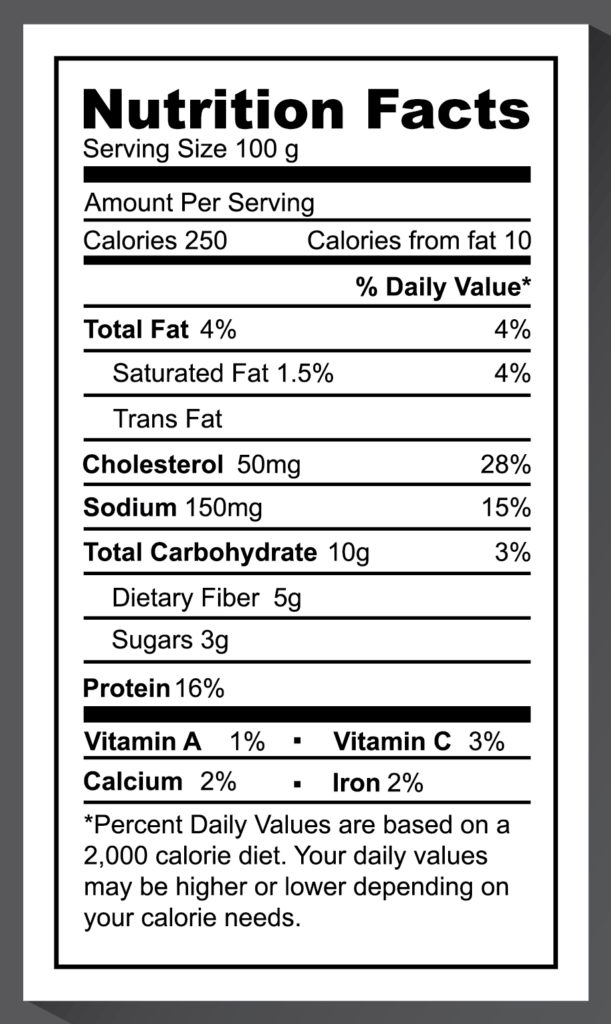Have you ever looked at the nutrition labels on a food product and wondered how to make sense of the information? If so, you’re not alone! Food labels contain a lot of information, and it can be confusing to consumers. In a 2012 survey conducted by researchers at the University of Waterloo, more than half of the 687 Canadians surveyed were not able to correctly identify and understand calorie and serving size information.
What is the Nutrition Facts table?
 The Nutrition Facts table is a nutrition label that is mandated by Health Canada and the Canadian Food Inspection Agency to be on most packaged food products, and can be used to help determine the nutritional value of the product. It’s typically found on the back or side of the product, and contains information on serving size, calories, and 13 core nutrients. Reading the Nutrition Facts Table can help you compare nutrition information of foods and make healthier food choices. Here’s how you can make sense of the facts:
The Nutrition Facts table is a nutrition label that is mandated by Health Canada and the Canadian Food Inspection Agency to be on most packaged food products, and can be used to help determine the nutritional value of the product. It’s typically found on the back or side of the product, and contains information on serving size, calories, and 13 core nutrients. Reading the Nutrition Facts Table can help you compare nutrition information of foods and make healthier food choices. Here’s how you can make sense of the facts:
Serving Size
The Serving Size is the amount of food used to calculate the nutrient information listed on the table. It is not the recommended serving size. When you are looking at the serving size listed on a product, consider the amount that you will actually be consuming. You can also compare different food products with similar serving sizes listed to determine which product is the healthier choice.
Calories
The Calories number tells you the amount of calories based on the serving size that is listed. If you eat more than the serving size listed, you will also be consuming more calories than the amount listed on the table.
Core Nutrients
The amounts of 13 core nutrients are listed on the table: fat, saturated fat, trans fat, cholesterol, sodium, carbohydrate, fibre, sugar, protein, vitamin A, vitamin C, calcium, iron. Choose a product that has the following:
- No trans fat (0g)
- Less fat, saturated fat, and sugar
- Less sodium (<200mg per serving)
- More fibre (>2 g per serving)
- More calcium and iron
% Daily Value
The % Daily Value tells you whether a product has a little (5% or less) or a lot (15% or more) of a nutrient. It’s important to note that 100% daily value is based on a 2000 calorie diet – this might not be the recommended calorie intake for everyone. When comparing different products, the % Daily Value can help you identify which product has more or less of a vitamin or mineral (e.g. vitamin A, vitamin C, calcium, iron). For all other nutrients (e.g. fat, sodium, fibre, sugar, etc.), focus on the actual amount that a product contains instead of using the % Daily Value.
So the next time you’re on a grocery run, take a few minutes to scan the Nutrition Facts table and compare food products. It’ll make you more aware of the nutrition content of the foods that you’re buying, and can help you make more informed and healthier food choices!
Update: Improvements coming to food labels
Health Canada recently announced improvements to the nutrition labels on Canadian food products. These changes, which you may start seeing in 2017, will have revised % Daily Values, more consistent serving sizes between products, easier-to-understand ingredients lists, and format improvements for better readability.








